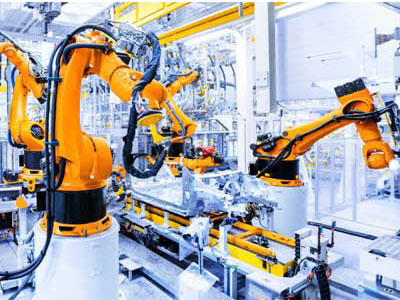Key Takeaway
Implementing robots in industries can be a game-changer. The initial cost is high, covering the purchase and setup. However, the benefits quickly outweigh these expenses. Robots increase productivity, reduce errors, and operate 24/7. This leads to significant cost savings over time. Companies often see a return on investment within a year. Some achieve double or even quadruple returns. Additionally, robots enhance product quality and worker safety. Overall, the cost-benefit analysis strongly favors implementing robots in industries.
Initial Investment Costs
Initial investment costs for starting an industrial automation products business like IndMALL typically include expenses for inventory procurement, website development, SEO tools, and initial marketing campaigns. Additionally, costs for establishing customer support infrastructure and digital platforms play a crucial role. Allocating funds for logistics and initial operational expenses is also essential. These investments are critical to kickstarting operations effectively and positioning the business for growth in the competitive industrial products market.

Operational Efficiency Gains
Industrial robots are pivotal in transforming manufacturing operations by enhancing operational efficiency through automation. Imagine a scenario where tasks that once required human intervention for repetitive actions, such as assembly line tasks or material handling, are now performed by robots with unparalleled precision and consistency. This automation not only accelerates production processes but also minimizes errors, thereby optimizing overall resource utilization within the factory.
The seamless integration of robots into manufacturing environments results in streamlined production lines and reduced cycle times. This means that goods can be manufactured and delivered to market faster, meeting consumer demands promptly. By taking on these repetitive tasks, robots free up human workers to focus on more complex and strategic aspects of production, such as quality control or process improvement initiatives.
Moreover, the precision offered by robots ensures that each product meets stringent quality standards, maintaining consistency in output quality. This reliability is crucial in industries where precision and reliability are paramount, such as automotive manufacturing or electronics assembly. Manufacturers benefit not only from increased output capacity but also from enhanced product reliability, which boosts customer satisfaction and loyalty.
Labor Cost Savings
One of the most compelling advantages of integrating robots into industrial settings is the substantial savings in labor costs. Unlike human workers who require breaks, shifts, and overtime pay, robots operate tirelessly and efficiently around the clock. This continuous operation minimizes downtime and maximizes production output, leading to significant reductions in labor expenses over time.
Labor cost savings extend beyond wages and overtime pay. With robots handling repetitive tasks, manufacturers can reduce the need for extensive workforce supervision, further lowering operational costs. This reduction in labor dependency also mitigates risks associated with workforce shortages or fluctuations in labor availability, providing stability in production operations.
Additionally, the consistent performance of robots ensures uniformity in output quality, eliminating variations that may arise from human error or fatigue. This reliability is crucial in industries where product consistency directly impacts customer satisfaction and brand reputation.
Furthermore, the upfront investment in industrial robots, while substantial, yields long-term cost savings and operational efficiencies that justify the initial capital outlay. Manufacturers can amortize the cost of robotics equipment over its operational lifespan, realizing significant return on investment through enhanced productivity and reduced operational costs.
Quality and Precision Improvements
Precision engineering lies at the core of robotic technology, revolutionizing manufacturing processes with unmatched levels of accuracy and quality control. Robots are adept at executing intricate tasks with minimal margin for error, setting new standards in product consistency and reliability. By leveraging advanced sensors and AI, robots ensure that every operation meets stringent specifications, minimizing defects and enhancing overall product quality. This precision not only elevates customer satisfaction but also reduces rework and warranty claims, thereby optimizing operational efficiency and bolstering brand reputation in competitive markets.
Industrial engineers entering this dynamic field benefit immensely from understanding how precision engineering transforms manufacturing landscapes. For newcomers, grasping the role of robotics in precision engineering is pivotal. It empowers them to appreciate how these technologies streamline operations, mitigate production challenges, and maintain high-quality standards throughout the manufacturing process. Learning to integrate robotic solutions effectively can significantly enhance their contribution to operational excellence and long-term business success.
Long-Term ROI
Investing in industrial robots entails significant upfront costs, but the long-term ROI is compelling and sustainable. Robots are designed to operate efficiently over extended lifecycles, offering businesses substantial cost savings through enhanced productivity and reduced operational expenses. By automating repetitive tasks and optimizing workflows, robots increase production output while minimizing labor costs and human error. This efficiency not only drives profitability but also strengthens market competitiveness, positioning businesses for sustained growth in evolving industries.
For newly joined engineers in the industrial sector, understanding the ROI dynamics of robotics is crucial. It enables them to appreciate how strategic investments in automation yield substantial returns over time. By analyzing case studies and real-world examples, engineers can grasp the financial impact of integrating robotic technologies into manufacturing environments. This knowledge equips them to advocate for robotic solutions, justify investment decisions, and contribute effectively to enhancing operational efficiencies and profitability.
Conclusion
Industrial robots offer substantial benefits despite their upfront costs. They enhance production efficiency, ensure consistent quality, and reduce labor costs over time. The initial investment pays off through increased productivity and minimized errors, leading to higher profitability. Companies can achieve competitive advantages and meet growing demands efficiently with robotic automation, making them a strategic investment for long-term success in industrial applications.
